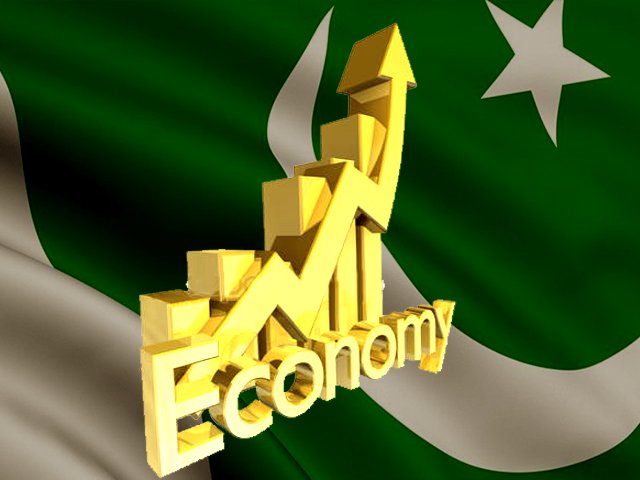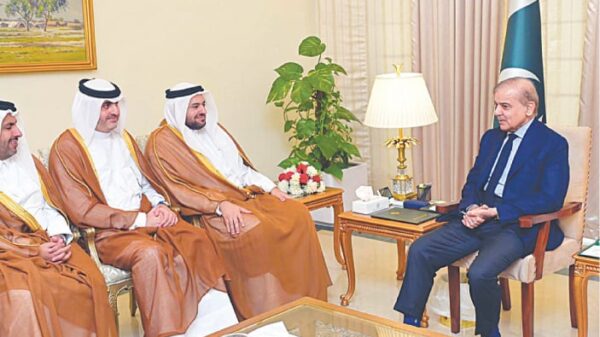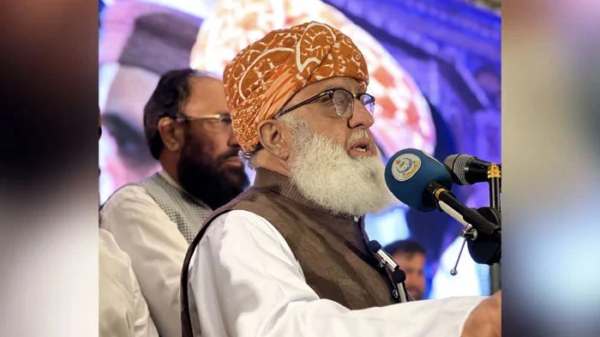TTI Magazine article
ISLAMABAD: The International Monetary Fund and the Pakistan government appear on the same page for negotiating a new loan program. Pakistan has officially approached the IMF for the next bailout package, seeking $6 to $8 billion with the potential for additional financing through climate funds. The request includes a review mission next month to finalize details of a new three-year bailout package under the Extended Fund Facility (EFF).
Interestingly, the IMF officials have shown their willingness to provide another bailout package to Pakistan amid gradual economic recovery in the country.
A delegation led by Finance Minister Muhammad Aurangzeb visited Washington to attend the IMF/World Bank spring meetings. Despite a positive economic outlook, Pakistan faces challenges highlighted by the IMF’s latest report, citing worsening external buffers due to ongoing debt repayments, including Eurobonds.
Why is the coalition government seeking another bailout program from the International Monetary Fund after the completion of a $3 billion standby arrangement in April this year?
There are multiple reasons for the government to obtain a new IMF loan program. For example, in the next financial year, Pakistan will have to return more than $20 billion worth of foreign loans while the reserves of the State Bank of Pakistan are fluctuating around $8 billion that too with money borrowed from Saudi Arabia, the United Arab Emirates, and China. Hence, in the next five years, Pakistan will have to repay more or less $100 billion in external loans.
Meanwhile, the Special Investment Facilitation Council (SIFC) is striving hard to attract foreign investment worth billions of dollars to magnify economic activities and growth, and to stabilize the investors’ confidence, value of the rupee, and foreign exchange reserves as well. The privatization program is also being pushed forward to mop up foreign investment and reserves.
All these initiatives are strongly connected to the IMF program that is being negotiated these days. Also, the recent record growth in the stock market and stability in the dollar-rupee value are being attributed to the possibility of the approval of another IMF loan program for Pakistan. If IMF approves a new bailout package, it will be Pakistan’s 24th program with the Fund that targets economic revival and growth, and avert the risks of default.
Therefore, the officials of the IMF are expected to reach Islamabad in the coming days to negotiate the new loan and its related matters with the government team, including an increase in the tax revenue, tax base, energy sector reforms, and phasing out of subsidies. As the present government has indicated its willingness to pursue the IMF requirements to obtain a new loan, it is understood that the government will not hesitate to further enhance the utility prices and cut subsidies, making energy bills more unbearable for the common people. There is a perception in the masses that as long as the country is in the IMF program, they will not get any major relief in the cost of electricity, gas, or petroleum products.
Meanwhile, the IMF executive board approved $1.1 billion last tranche of the standby arrangement on April 29 for Pakistan.
Earlier, Finance Minister Muhammad Aurangzeb told the media that Pakistan aims to reach a staff-level agreement on a new, larger, long-term loan from the IMF by early June, before the announcement of new budget. Discussions are already underway between the Fund and the Pakistani government. If secured, this would be Pakistan’s 24th IMF bailout. The country is grappling with a balance of payments crisis, facing the task of repaying nearly $24 billion in debt and interest over the next fiscal year, three times the amount in its central bank’s foreign currency reserves.
Pakistan anticipates a 2.6% growth in the current fiscal year, with an average inflation rate projected at 24%. It aims to agree on a new IMF loan in May and return to international debt markets. Plans for a potential international capital markets issuance, possibly through a green bond, are being discussed for the 2025/2026 fiscal year.
IMF Managing Director asks Pakistan to address past shortcomings
International Monetary Fund (IMF) Managing Director Kristalina Georgieva reiterated her call for Pakistan to enhance tax collection from its affluent citizens while ensuring the welfare of the underprivileged. The meeting, held on the sidelines of the 78th UNGA session in New York, focused on aligning these efforts with the IMF program aimed at supporting the Pakistani populace and revitalizing the economy. Ms. Georgieva emphasized the importance of Pakistan rectifying past shortcomings and implementing policies to benefit its citizens. In 2022-23, IMF approved a $3 billion Stand-By Agreement (SBA), aimed at assisting Pakistan’s economy.
The IMF Managing Director commended Pakistan’s dedication to economic recovery policies and reforms, reaffirming the IMF’s commitment to ongoing collaboration. Ms. Georgieva stressed the need for strong policies to ensure stability, foster sustainable and inclusive growth, prioritize revenue collection, and protect the most vulnerable in Pakistan.
This stance is not new for the IMF or Ms. Georgieva. She previously issued a similar statement earlier this year, urging Pakistan to raise tax revenues and ensure fair distribution of subsidies to those in need. It is the second time she has publicly emphasized the IMF’s stance on collecting more taxes from the wealthy and protecting the poor. The current caretaker government, as well as previous coalitions, have cited their IMF program as a constraint in providing tax relief.
52% growth in foreign investment shows signs of economic revival
In March 2024, Pakistan’s foreign direct investment (FDI) landscape experienced a significant uptick, indicating a promising shift in the country’s economic trajectory.
According to the latest data from the State Bank of Pakistan (SBP), FDI inflows surged by an impressive 51.7% month-on-month (MoM), reaching $258 million. This marked a notable increase from $170 million recorded in the same period last year. The March FDI inflow represents the highest figure since June 2022, signaling renewed confidence among international investors in Pakistan’s economic potential.
Despite this positive momentum, FDI inflows for the first nine months (July-March) of the current fiscal year witnessed a modest decline of 9.7% compared to the previous year. Pakistan received $1.099 billion in FDI during this period, down from $1.217 billion in the corresponding period of the preceding year. Pakistan has traditionally attracted around $2 billion in FDI annually, making it a focal point for foreign investors within the region. However, a closer examination of the data reveals mixed trends, with certain key contributors experiencing fluctuations in their investment patterns.
China and the UAE, significant sources of FDI for Pakistan, saw notable declines in their investment flows. FDI from China dropped to $262 million in the first nine months of FY24, a substantial decrease from $556.6 million during the same period last year.
Similarly, FDI from the UAE witnessed a significant downturn, with inflows decreasing to $27.7 million from $88.7 million previously. Despite these declines, the government remains optimistic about attracting substantial investments from the UAE, particularly under the Special Investment Framework Agreement. Amidst these fluctuations, other countries emerged as noteworthy contributors to Pakistan’s FDI landscape. Hong Kong’s investment surged by 46% to $26.4 million, indicating growing confidence in this region.
Meanwhile, the UK maintained its position as a prominent investor, with FDI amounting to $196.3 million. The USA also continued its investment commitment, albeit with a slight decrease to $100.7 million. In a surprising turn, the Netherlands witnessed a remarkable uptick in investment, recording a staggering 306% increase to $6.7 million during the nine months.
Karachi, the economic hub of Pakistan, played a pivotal role in this FDI resurgence, attracting a diverse range of investments across sectors. The city saw a doubling of FDI every month in March 2024, marking a significant milestone in Pakistan’s journey towards economic revitalization.
Current Account Surplus hits record high level
In March 2024, Pakistan’s economic landscape witnessed a significant improvement as reported by the State Bank of Pakistan (SBP), with a substantial current account surplus of $619 million. This remarkable figure marks the highest monthly surplus since February 2015, indicating a positive turn for the country’s financial health.
The surge in surplus can largely be attributed to a remarkable increase in workers’ remittances, a key contributor to Pakistan’s economy. Compared to the previous month’s surplus of $98 million, March’s surplus represents a significant leap. Moreover, in March 2023, the surplus stood at $537 million, indicating a substantial year-on-year improvement.
On a cumulative basis, the current account deficit for the first nine months of fiscal year 2024 amounted to $508 million. This reflects an impressive 87.5% year-on-year improvement compared to the deficit of $4.05 billion recorded in the same period of the previous fiscal year. The rise in total exports by 4.6% year-on-year, reaching $3.23 billion, contributed to the positive momentum.
Similarly, total imports saw an increase of 7.9% year-on-year, totaling $5.25 billion. However, while the trade deficit widened both on a yearly and monthly basis, the overall trend remains positive. Breaking down the data, the trade deficit in goods reached $1.93 billion, up 11.2% year-on-year, driven by increases in both exports and imports.
Additionally, the trade deficit in services expanded to $89 million, marking a significant year-on-year increase. The standout performer, however, was workers’ remittances, which soared by 16.4% year-on-year to $2.95 billion in March. Every month, remittances surged by 31.3%, reaching $2.25 billion.
Cumulatively for the first nine months of the fiscal year, workers’ remittances totaled $21.04 billion, a slight increase from the previous year. Overall, Pakistan’s economic indicators portray resilience and growth, driven by robust remittances and improving trade balances.
KSE-100 Index surges above 72,000 level
In recent days, the KSE-100 index has set a new record by surpassing the 72,000 level for the first time. Gradual economic recovery backed by positive economic developments and the government’s decision to obtain another loan from the IMF has made the stock market sentiment bullish. Analysts believe that after the approval of the next loan program, the stock market and other corporate sectors will see a further boom in their economic activities.
SBP’s Foreign Exchange reserves to stabilize around $10 billion in June
Finance Minister Muhammad Aurangzeb announced that Pakistan’s foreign exchange reserves are expected to reach $9-10 billion by June 2024. The Finance Minister stated this recently while speaking to the media after addressing the “Leaders in Islamabad Business Summit 2024 Collaborating for Growth.”
About the increase in electricity and gas prices, Aurangzeb stated that the government has its priorities regarding these prices. During his address at the Summit, the finance minister stated that Pakistan’s foreign exchange reserves, after receiving one billion dollars from the IMF, would reach $9 billion. By the end of June, foreign exchange reserves are expected to reach $10 billion. He dispelled the impression of low growth in the IMF program, highlighting the potential for agriculture and livestock sectors to boost economic growth. However, he noted that it is uncertain about the size of the IMF’s next program. According to the SBP’s latest data, released on April 26, the central bank’s reserves stood at $7.9 billion by April 19. Total reserves amounted to $13.28 billion after including the private banks’ foreign exchange reserves.
END
I am an experienced writer, analyst, and author. My exposure in English journalism spans more than 28 years. In the past, I have been working with daily The Muslim (Lahore Bureau), daily Business Recorder (Lahore/Islamabad Bureaus), Daily Times, Islamabad, daily The Nation (Lahore and Karachi). With daily The Nation, I have served as Resident Editor, Karachi. Since 2009, I have been working as a Freelance Writer/Editor for American organizations.










